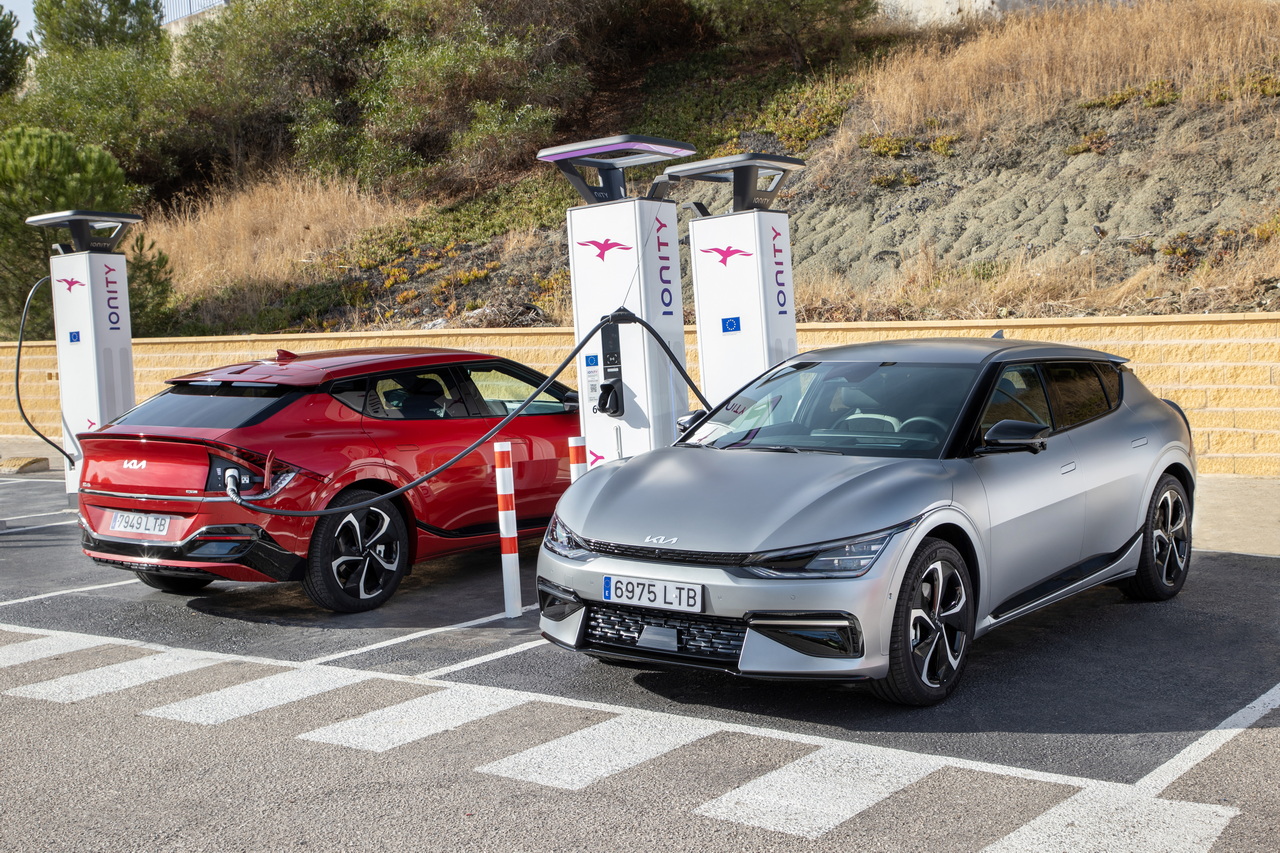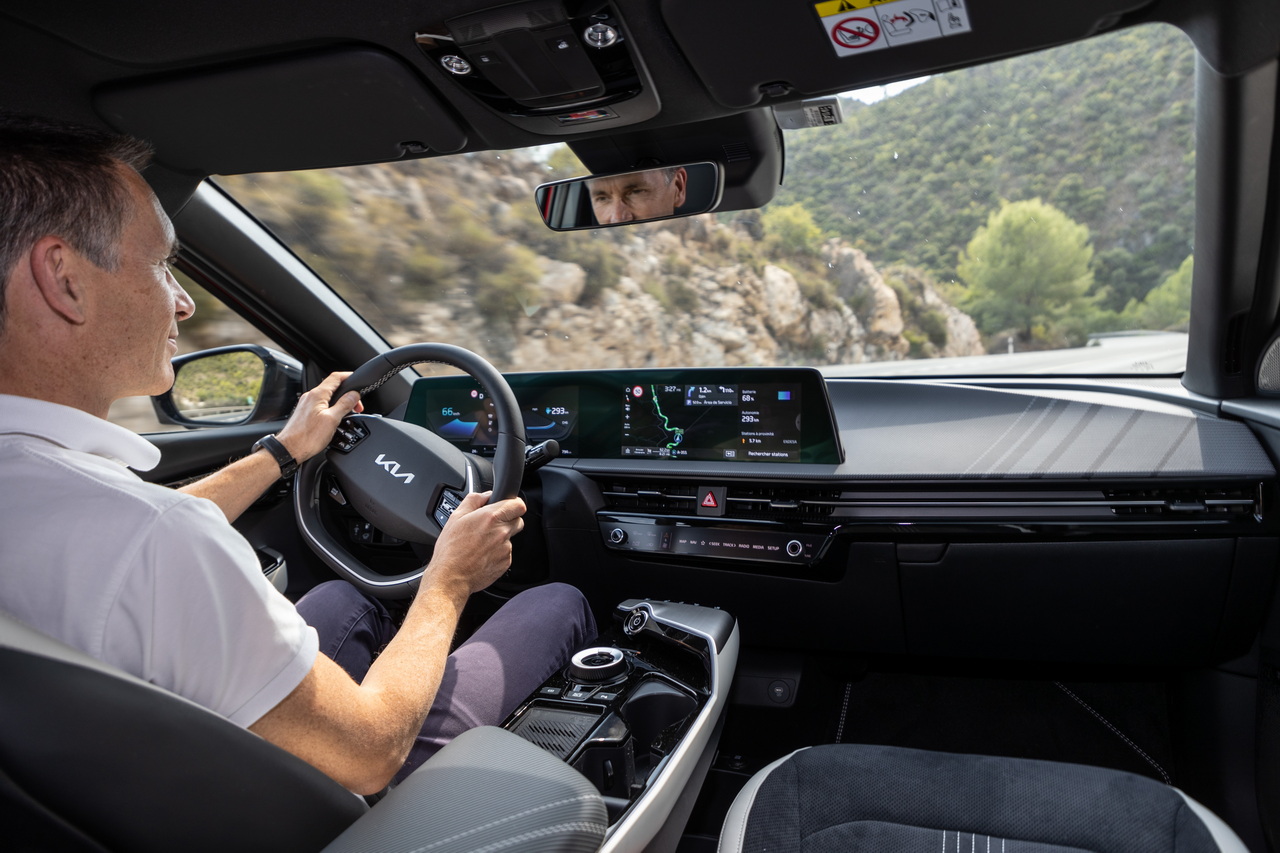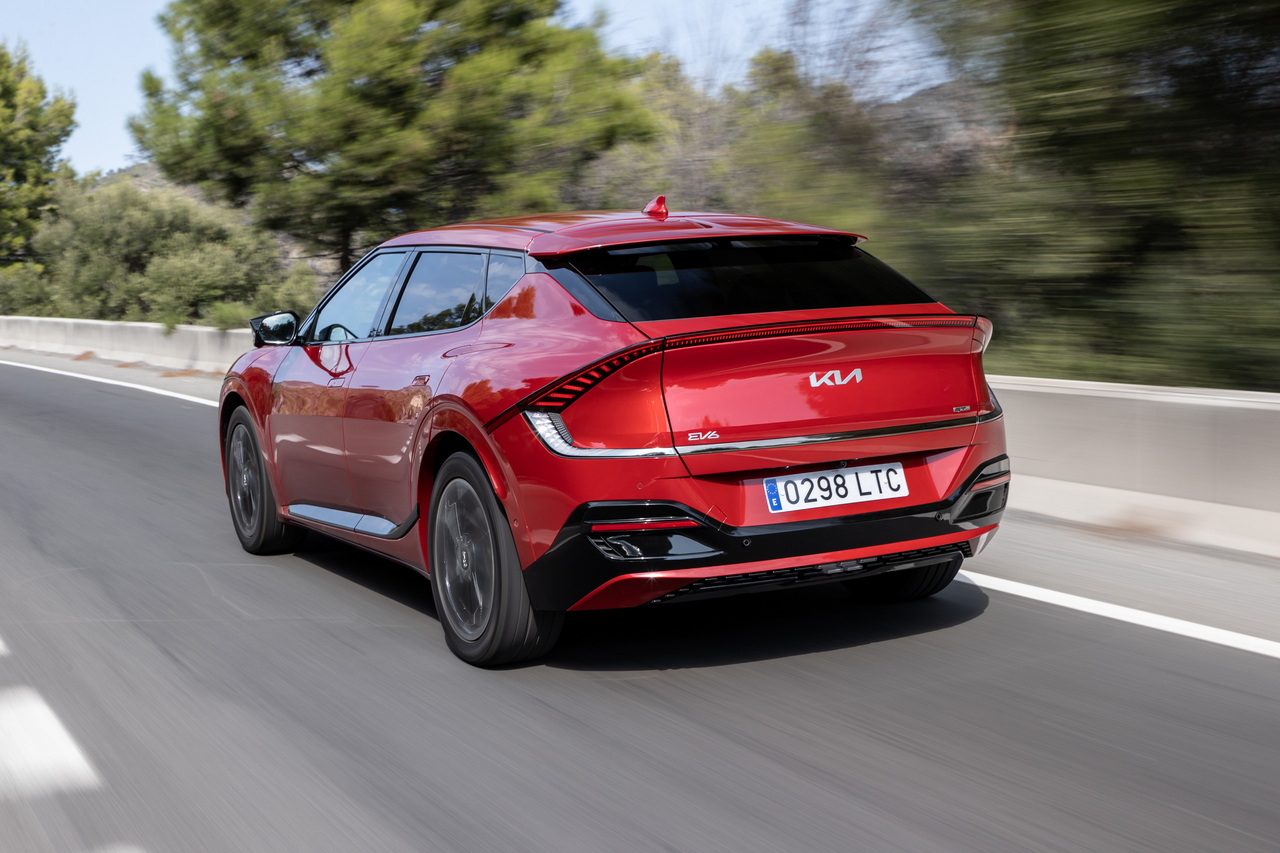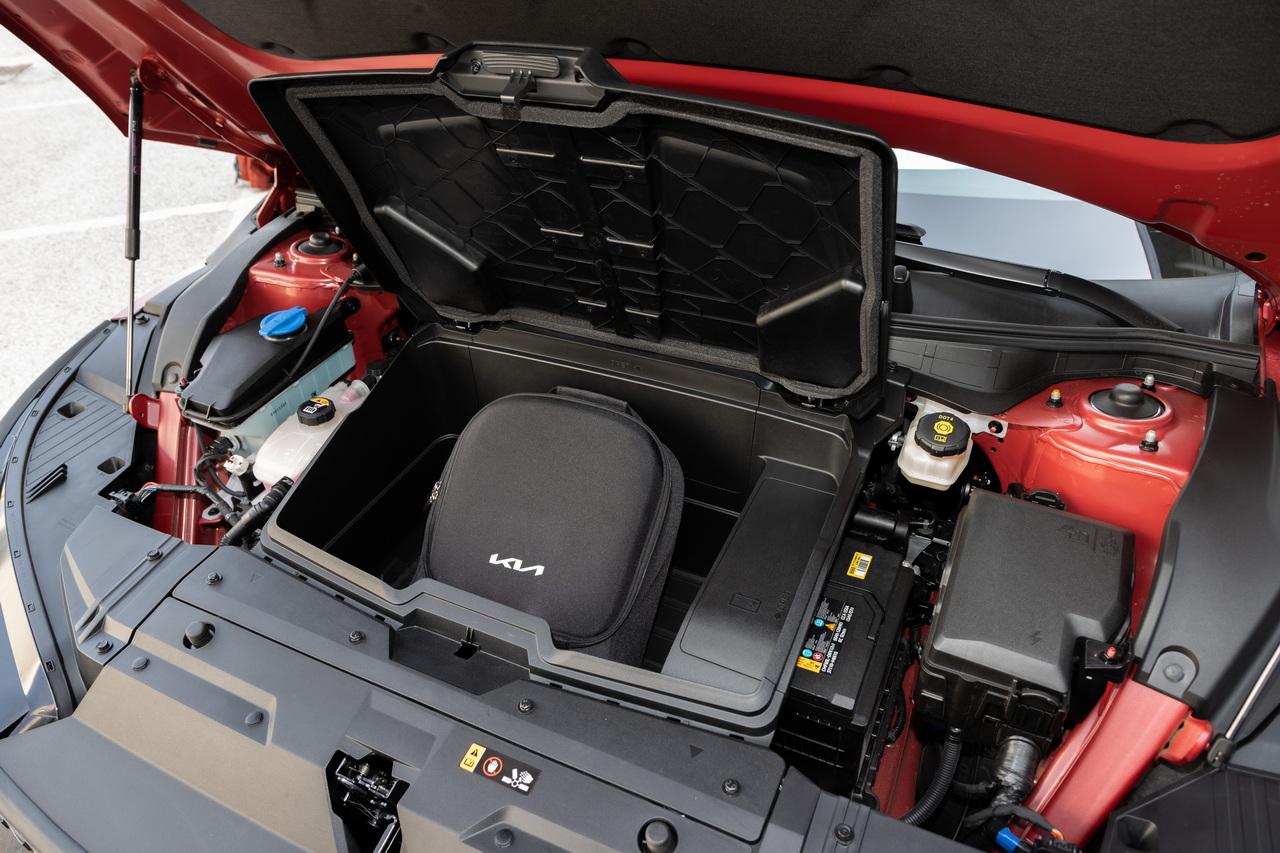
In its two-wheel drive version, the new Kia EV6 passes the 500 km range mark on the WLTP cycle and above all offers ultra-fast charging for long-distance journeys. The range of action of this astonishing crossover is not the only one of its qualities.
Test car: Kia EV6 GT-Line 229 hp 2WD
|
From€ 55,790
€ 2,000 bonus
|
Kia is a significant player in the electric vehicle market thanks to its e-Niro, and today it puts a big boost with the new EV6 (pronounce ivi-six!). This time, the Korean manufacturer uses a platform entirely dedicated to battery-powered vehicles, which allows it to go even further in technology, charging speed and range. This base of the Hyundai-Kia group, called E-GMP, is already used by the Ioniq 5 and for example allows the EV6 to benefit from an 800 V electrical architecture so far offered by the only duo Porsche Taycan and Audi e -tron GT. Just that !
The advantage of the 800 V network is in particular that it derives a very high charging power of 239 kW, which reduces downtime at high-capacity terminals. However, the Kia EV6 does not only rely on its technology to distinguish itself. Its body, which is 4.68 m long and 1.55 m high, sports a crossover look and a strong personality. If the front is fairly classic, the profile offers more character. But the stern is really the highlight of the show of this model which will, without a doubt, turn heads.

Price, range and charging Kia EV6
Available from € 51,990 in four-wheel drive version, the Kia EV6 lowers its price by € 4,000 in two-wheel drive version, which will be the most popular. The 229 hp EV6 2 WD starts at € 47,990. But for a version well supplied with equipment (see list on next page) and attractive in design, it will be necessary to aim for the GT Line at 55,790 €, which corresponds to the model photographed. Note the optional original reverse charge, which allows power to be delivered to electrical devices from the external socket or the one located in the rear seats.
This 2WD version of the EV6 offers a range of 528 km on the WLTP combined cycle. This fine result is due to the generous battery with a useful capacity of 77.4 kWh and reasonable consumption (16.5 kWh / 100 km). This range allows the Kia EV6 to overcome the obstacle of long-distance mobility, especially since its DC charger accepts a peak power of 239 kW, what no other generalist brand model can do, apart from Ioniq 5. On a suitable terminal, this ultra-fast recharging increases the battery from 10% to 80% in 18 minutes, which is the time for a coffee break.


Such mobility, however, depends on the deployment of high-capacity terminals and mainly of the Ionity network, with which Kia has entered into agreements for preferential rates. The driver will pay 0.29 € per minute of charging (instead of € 0.79) with the Charge Plus card, free the first year and billed € 13 per month thereafter. For everyday life, even for the week, autonomy is no longer a problem. However, charging at home is recommended to avoid unpleasant surprises (public terminals stormed with PHEVs or out of service).
Driving
If the 4×4 EV6 with 325 hp and 605 Nm of torque allows toned driving, our 229 hp model with rear-wheel drive is wiser. The 350 Nm of torque available without delay make it easy to fit into traffic or drive at a good pace, but performance is not its priority. The engine is also muzzled by the large mass to be moved (1 985 kg) and this overweight is also felt in the behavior of the vehicle. It slows down its agility and degrades its comfort, because the damping is firm enough to channel the movements of the body. The installation of a controlled damping would have been profitable in order to find a good balance between comfort and dynamism, but it is only reserved for the thunderous version GT (585 ch) which will arrive in 2022. Too bad.

If its dynamism does not reach that of a Tesla Model Y, billed much more expensive, the EV6 nevertheless delivers a good driving pleasure with the usual paces with a safe behavior, a smooth direction and a rather precise guidance of the front axle. The feeling on the brake pedal is good, except on the most pronounced decelerations, where the stroke of the pedal lengthens surprisingly to the detriment of the dosage. A fault shared with many electric cars. Obviously, silence is the part in all the phases of taxiing, even if some aerodynamic whistles came to disturb the peace of mind on the motorway.
The EV6 comes standard with adaptive cruise control and lane keeping. This driving assistant offers fluid reactions (no jerks when braking and gradual recovery). However, its use would have been facilitated by the presence a capacitive flywheel, which avoids applying movement in the direction at regular intervals. Such an oversight is, moreover, surprising for such a modern car.

Three driving modes are on the program: Eco, Normal and Sport, which are supplemented by four levels of energy recovery. These range from freewheeling (this is the most fluid and comfortable mode for passengers) to one-pedal driving (the vehicle stops without touching the brake), allowing strong regeneration in town. Their setting via the paddles behind the wheel are the best. It will be interesting to test the EV6 on our course dedicated to the autonomy of electric vehicles, in particular to determine its real range on the motorway. In the meantime, on a test loop of 82 km devoted to classic driving at legal speeds on roads and expressways, we observed a consumption of 20.6 kWh with a model equipped with 20-inch wheels. This is beyond the combined WLTP value, set at 17.2 kWh / 100 km.
On board









Competetion
The first rival of the EV6 is obviously the technical cousin Hyundai Ioniq 5. It is displayed € 1,100 cheaper on the base price for the 4 x 2 version of 218 hp, but its battery is a little less powerful (72, 6 kWh), its autonomy too, and the presentation of the passenger compartment is less qualitative. The Volkswagen ID.4 is close to the EV6 (204 hp, 77 kWh battery and range of 520 km WLTP), and it proved to be efficient in our range test. Its access rate is equivalent to that of the EV6, but the interior finish of the German is a notch below that of the Korean. Its DC charger is also almost half as fast: 125 kW against 239 kW.
The Ford Mustang Mach-E relies on its large battery (99 kWh) to offer a greater range (600 km on the WLTP cycle). However, its DC recharge is slower, and the price of this Range Extended RWD version starts much higher (56,500 €). When we talk about high price, the Tesla Model Y points its muzzle (minimum 59 990 €), but the American is evolving on another planet in terms of performance (351 hp, four-wheel drive, sharp chassis) and has its own network of superchargers.
Find the balance sheet, equipment and technical sheet on the next page …
















